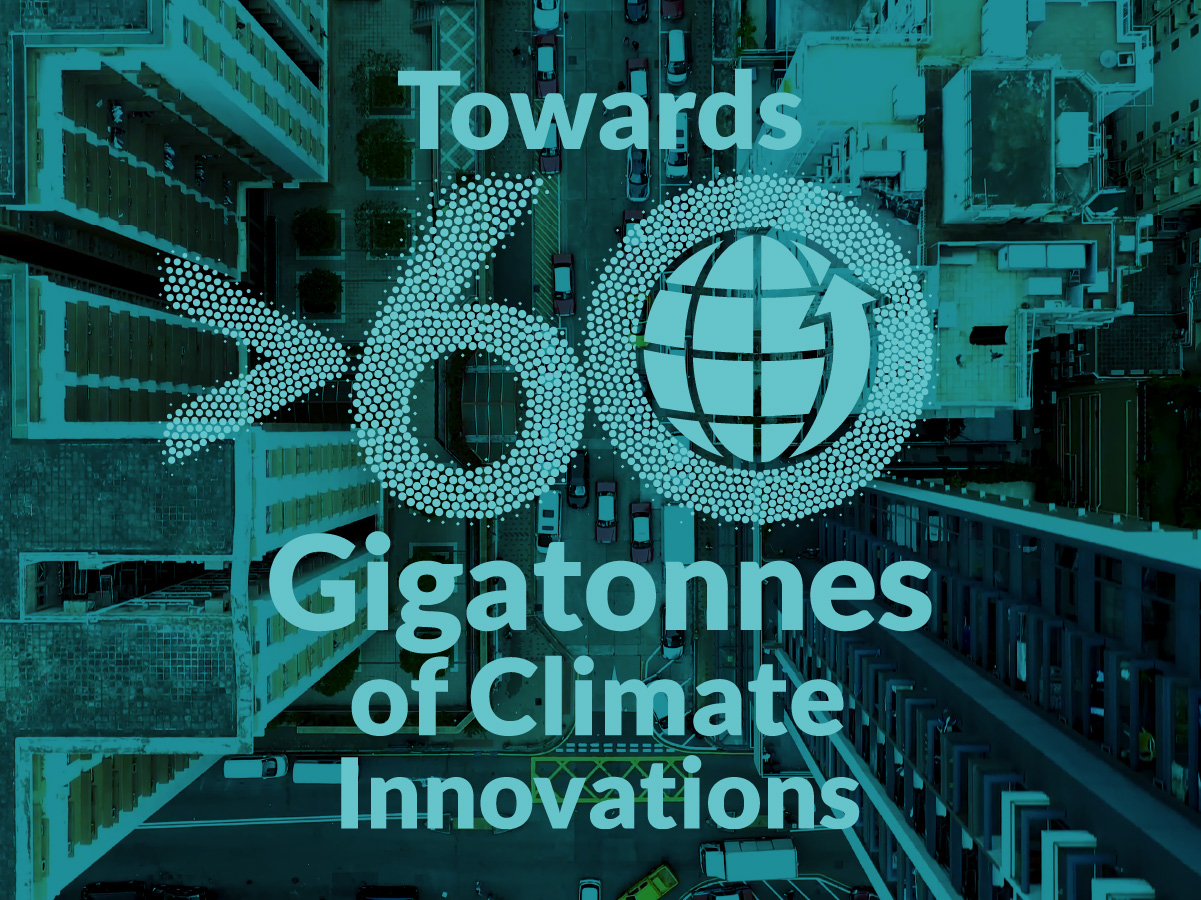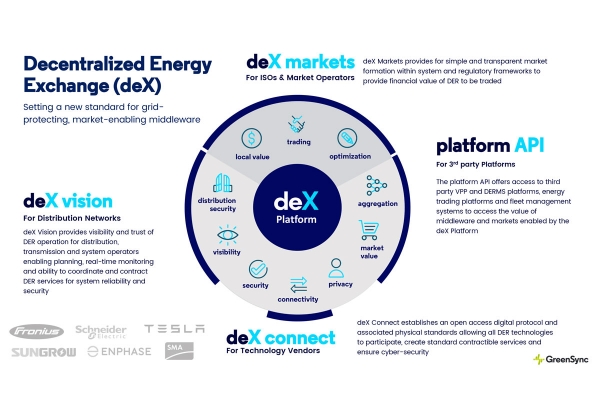Nominated innovations
1000 innovative clean energy solutions and > 150 framework enablers with the potential to deliver more than twelve gigatonnes of avoided emissions by 2030
These assessments are based on a basic avoided emission assessment. The overall concept of avoided emissions is that a solution (product or service) enables the same function to be performed with significantly less GHG emissions. The method of measuring avoided emissions, is to compare a baseline scenario without the enabling solution, with a scenario using the enabling solution; whereby the baseline represents the ‘business as usual’ (BAU) scenario.
These assessments are based on the framework document: The Avoided Emissions Framework (AEF) from September 2020

Energytours
Energytours wrote: Helping those who need energy not connected to the grid... Source: EIT Climate KIC's ClimateLaunchPad
Austria

Energytours
Energytours
Energytours wrote: Helping those who need energy not connected to the grid... Source: EIT Climate KIC's ClimateLaunchPad
Currently unavailable

Platform for decentralized energy exchange
GreenSync has developed a platform for decentralized energy exchange (deX) to dramatically increase networks’ hosting capacity for renewable energy. GreenSync provides a software solution for high penetration of intermittent renewable electricity sources. The deX solution increases control and visibility that is easily lost when adding decentralized electricity sources to the grid. With deX, the use of the intermittent electricity could be optimized, and investment costs can be reduced. By using deX, more renewable energy from decentralized sources can hence be used, which would reduce the emissions from peak load demand.
Australia
≈10

GreenSync
Platform for decentralized energy exchange
GreenSync has developed a platform for decentralized energy exchange (deX) to dramatically increase networks’ hosting capacity for renewable energy. GreenSync provides a software solution for high penetration of intermittent renewable electricity sources. The deX solution increases control and visibility that is easily lost when adding decentralized electricity sources to the grid. With deX, the use of the intermittent electricity could be optimized, and investment costs can be reduced. By using deX, more renewable energy from decentralized sources can hence be used, which would reduce the emissions from peak load demand.
≈10Mt CO2e/year

Coheatsion
Coheatsion wrote: Heatwaves are a silent killer, especially for isolated elderly who may not have family or support nearby. Over half of all australians report they feel lonely on at least 1 day per week. Loneliness is greatest among young adults and the elderly. We built an app to mitigate the impact of heatwaves for vulnerable elders by providing a local support network for them, referencing youth. Creating cohesion at a time of crisis. The app triggers a push notification during a heatwave, for a youth (heatmate) to check up on nearby elderly. The youth checking in on the elderly notes in the app how he/she is feeling, these data points further updates the elderly’s risk score. All heatmates are verified first through a background check... Source: EIT Climate KIC's Climathon
Australia

Coheatsion
Coheatsion
Coheatsion wrote: Heatwaves are a silent killer, especially for isolated elderly who may not have family or support nearby. Over half of all australians report they feel lonely on at least 1 day per week. Loneliness is greatest among young adults and the elderly. We built an app to mitigate the impact of heatwaves for vulnerable elders by providing a local support network for them, referencing youth. Creating cohesion at a time of crisis. The app triggers a push notification during a heatwave, for a youth (heatmate) to check up on nearby elderly. The youth checking in on the elderly notes in the app how he/she is feeling, these data points further updates the elderly’s risk score. All heatmates are verified first through a background check... Source: EIT Climate KIC's Climathon
Currently unavailable

Electricity reduction service
My Impact wrote: Electricity prices in australia and around the world are skyrocketing and after thorough market research, we know that restaurants are some of the highest electricity consuming businesses in australia. Many owners and managers have told us that they do not understand their electricity bills, and renewable energy isn't an option as they are often tenants and not building owners. . So how do we fix this and empower restaurants to lower their electricity consumption? ... Source: EIT Climate KIC's ClimateLaunchPad
Australia

My Impact
Electricity reduction service
My Impact wrote: Electricity prices in australia and around the world are skyrocketing and after thorough market research, we know that restaurants are some of the highest electricity consuming businesses in australia. Many owners and managers have told us that they do not understand their electricity bills, and renewable energy isn't an option as they are often tenants and not building owners. . So how do we fix this and empower restaurants to lower their electricity consumption? ... Source: EIT Climate KIC's ClimateLaunchPad
Currently unavailable

Waste, renewable and solar heat, 24/7
Capricorn Power wrote: Our vision is to commercialise a new, renewable source of 24/7 electricity, and to deploy it globally. . Capricorn power has a novel heat engine, based on a proven thermodynamic cycle, with patented innovations which result in the ability to use a wide range of heat sources (biogas, biomass, concentrated solar thermal, industrial waste heat), and high efficiency in converting heat to electricity (even at small scale, < 100 kw). . The high efficiency at small scale allows us to go to the source of the waste; reducing transport, increasing electricity value (retail rather than wholesale) and enabling the beneficial use of cogeneration. Our system uses mostly off-the-shelf components, resulting in capital efficiency. ... Source: EIT Climate KIC's ClimateLaunchPad
Australia

Capricorn Power
Waste, renewable and solar heat, 24/7
Capricorn Power wrote: Our vision is to commercialise a new, renewable source of 24/7 electricity, and to deploy it globally. . Capricorn power has a novel heat engine, based on a proven thermodynamic cycle, with patented innovations which result in the ability to use a wide range of heat sources (biogas, biomass, concentrated solar thermal, industrial waste heat), and high efficiency in converting heat to electricity (even at small scale, < 100 kw). . The high efficiency at small scale allows us to go to the source of the waste; reducing transport, increasing electricity value (retail rather than wholesale) and enabling the beneficial use of cogeneration. Our system uses mostly off-the-shelf components, resulting in capital efficiency. ... Source: EIT Climate KIC's ClimateLaunchPad
Currently unavailable

Biofuels from Seaweed
Tide 2 Tank wrote: Tide 2 tank is a group of engineers seeking to establish large scale kelp farming on the coastal waters of south australia in order to provide a carbon neutral and cost competitive biomass that can be refined into biofuels. As a byproduct of this the biomass can be sold to a large number of markets for various product uses. The aqua farms themselves sequesters carbon from the ocean and help rehabilitate used fisheries an polluted waters... Source: EIT Climate KIC's ClimateLaunchPad
Australia

Tide 2 Tank
Biofuels from Seaweed
Tide 2 Tank wrote: Tide 2 tank is a group of engineers seeking to establish large scale kelp farming on the coastal waters of south australia in order to provide a carbon neutral and cost competitive biomass that can be refined into biofuels. As a byproduct of this the biomass can be sold to a large number of markets for various product uses. The aqua farms themselves sequesters carbon from the ocean and help rehabilitate used fisheries an polluted waters... Source: EIT Climate KIC's ClimateLaunchPad
Currently unavailable

ACTA
ACTA wrote: The country's first, industry-only, initiative the australasian circular textile association is focussed on delivering education, awareness in regenerative sustainable practice and to foster better collaboration within the australian + new zealand fashion industry. . This year in march, sydney i ran the australian circular fashion conference, an exclusive industry only initiative where close to 300 professionals attended from the australian + new zealand. . Acta was formed shortly after in response to attendees and fellow professionals, seen as a necessity to help support the enormity transitioning the industry from a linear production model to full circularity. ... Source: EIT Climate KIC's ClimateLaunchPad
Australia

ACTA
ACTA
ACTA wrote: The country's first, industry-only, initiative the australasian circular textile association is focussed on delivering education, awareness in regenerative sustainable practice and to foster better collaboration within the australian + new zealand fashion industry. . This year in march, sydney i ran the australian circular fashion conference, an exclusive industry only initiative where close to 300 professionals attended from the australian + new zealand. . Acta was formed shortly after in response to attendees and fellow professionals, seen as a necessity to help support the enormity transitioning the industry from a linear production model to full circularity. ... Source: EIT Climate KIC's ClimateLaunchPad
Currently unavailable

Tripling the energy output of solar panels
Sunovate wrote: Sunovate is a combined solar thermal and pv technology (pvt) that has been designed to provide a renewable solution for the heating and cooling demand that accounts for ~43% of final energy consumption globally. The sunovate pvt system has been designed to service this heat requirement and produce renewable electricity and does this by boosting the output of pv panels by 300%. The sunovate technology maximizes the energy output from solar panels, providing buildings and businesses with heat as well as electricity. It has been intentionally designed to integrate with existing solar panels to redirect the heat from the panels for use in space, water, process and pool heating... Source: EIT Climate KIC's ClimateLaunchPad
Australia

Sunovate
Tripling the energy output of solar panels
Sunovate wrote: Sunovate is a combined solar thermal and pv technology (pvt) that has been designed to provide a renewable solution for the heating and cooling demand that accounts for ~43% of final energy consumption globally. The sunovate pvt system has been designed to service this heat requirement and produce renewable electricity and does this by boosting the output of pv panels by 300%. The sunovate technology maximizes the energy output from solar panels, providing buildings and businesses with heat as well as electricity. It has been intentionally designed to integrate with existing solar panels to redirect the heat from the panels for use in space, water, process and pool heating... Source: EIT Climate KIC's ClimateLaunchPad
Currently unavailable

The solution for sustainable air travel
Fuel Switch wrote: Fuel switch aim to directly tackle the almost 1 billion tonnes of co2 that aviation generates every year. We allow airlines to empower their passengers with the choice to fly sustainably through the use of renewable jet fuel, reducing emissions by around 80%... Source: EIT Climate KIC's ClimateLaunchPad
Australia

Fuel Switch
The solution for sustainable air travel
Fuel Switch wrote: Fuel switch aim to directly tackle the almost 1 billion tonnes of co2 that aviation generates every year. We allow airlines to empower their passengers with the choice to fly sustainably through the use of renewable jet fuel, reducing emissions by around 80%... Source: EIT Climate KIC's ClimateLaunchPad
Currently unavailable

Regenerate Australia
Regenerate Australia wrote: Carbon sync enables transformational change in agricultural landscape management. This change results in the regeneration of ecosystems, renewal and repopulation of rural communities, remineralisation of food a fibre products and carbon sequestration potential so significant that it could bring australia to net zero emissions in as little as 20 years when adopted at scale. This is all achieved with exisiting, proven technology while at the same time producing food and fibre. This technology is called regenerative agriculture... Source: EIT Climate KIC's ClimateLaunchPad
Australia

Regenerate Australia
Regenerate Australia
Regenerate Australia wrote: Carbon sync enables transformational change in agricultural landscape management. This change results in the regeneration of ecosystems, renewal and repopulation of rural communities, remineralisation of food a fibre products and carbon sequestration potential so significant that it could bring australia to net zero emissions in as little as 20 years when adopted at scale. This is all achieved with exisiting, proven technology while at the same time producing food and fibre. This technology is called regenerative agriculture... Source: EIT Climate KIC's ClimateLaunchPad
Currently unavailable